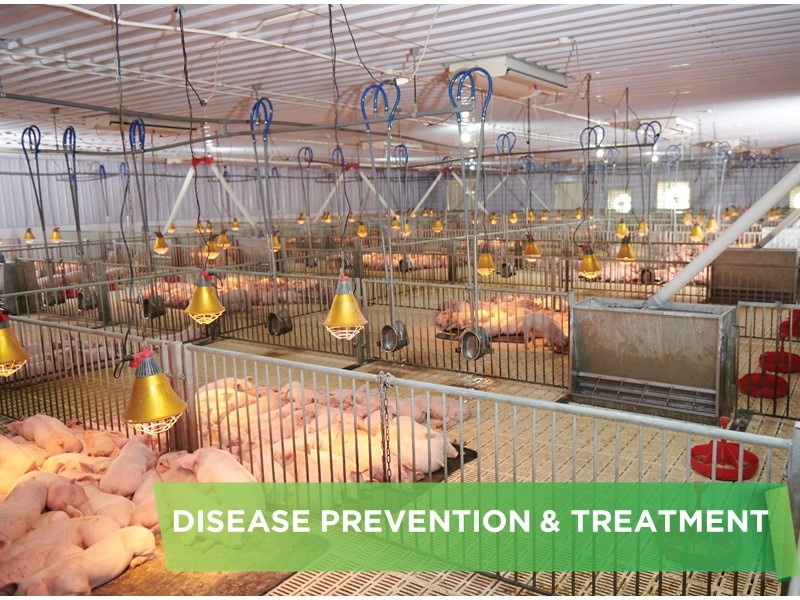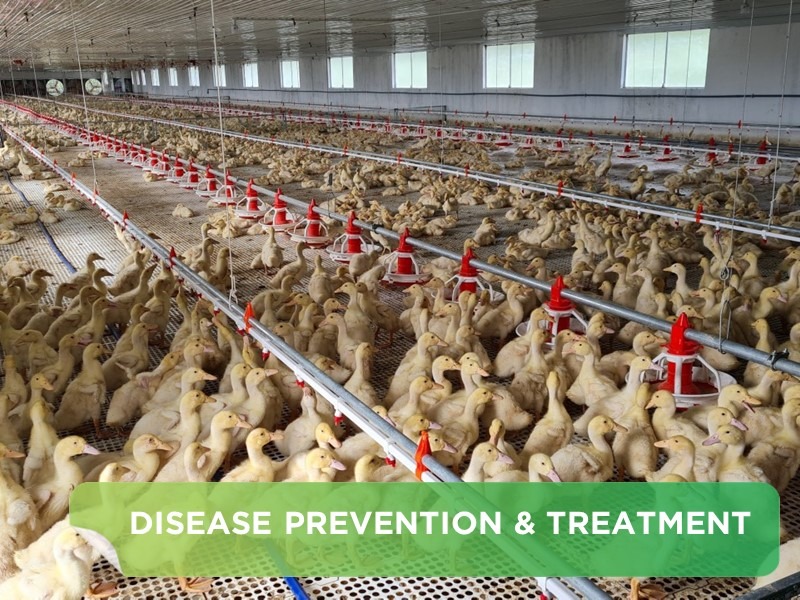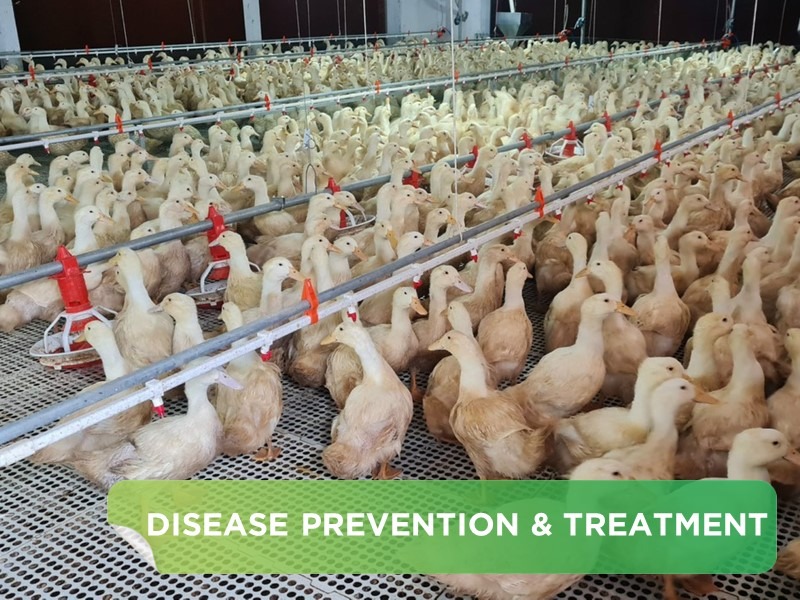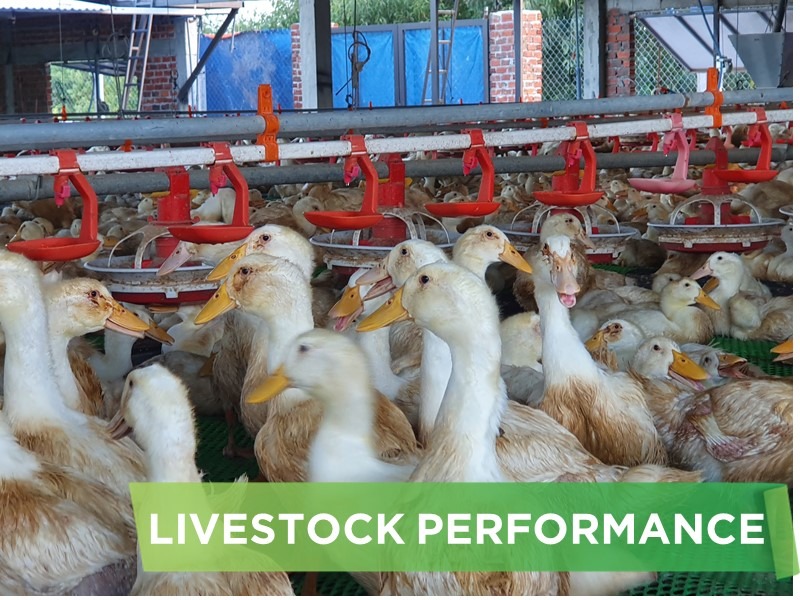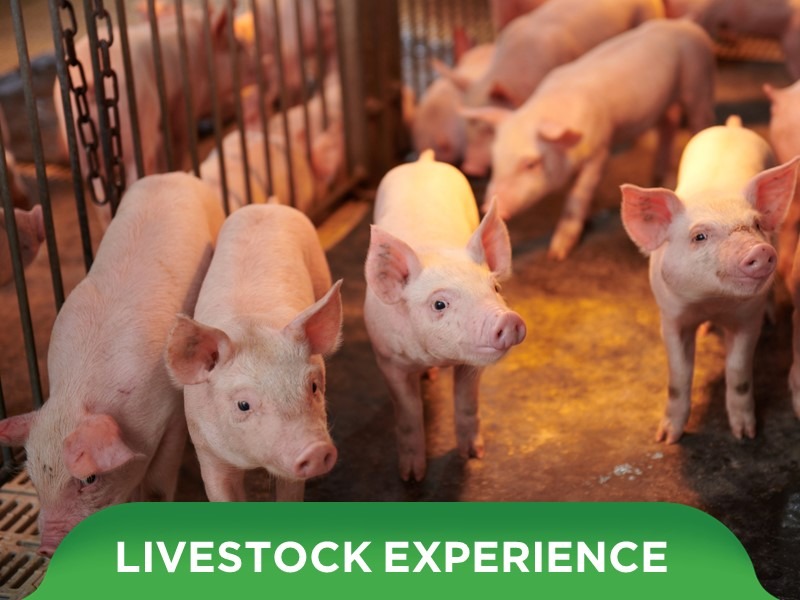Chronic respiratory disease CRD, also known as "chicken asthma", is a common infectious disease in poultry. The disease is mainly caused by the bacteria Mycoplasma gallisepticum (MG). In addition, the strain Mycoplasma Synoviae (MS) that causes infectious arthritis sometimes also causes respiratory tract inflammation in chickens. This article will discuss the signs of CRD and how to handle it when detecting chickens infected with CRD in time, to minimize economic losses for farm owners.
1) What is CRD?
Chronic respiratory disease CRD, also known as "chicken asthma", is a common infectious disease in poultry. The disease is mainly caused by the bacteria Mycoplasma gallisepticum (MG) in chickens of all ages.
Causes: The disease often occurs strongly when affected by the following factors:
• Sudden weather changes
• When transporting, moving flocks, combining flocks...
• Too high stocking density
• Wet, dusty barn floor, too high concentration of NH3, H2S...
• Not ensuring ventilation of the barn, especially not ensuring wind speed
Path of disease transmission:
• The disease is often transmitted vertically from the mother flock to the offspring.
The disease is also transmitted horizontally when there is direct contact between infected or recovered birds but carrying the pathogen to susceptible flocks.
Economic losses for farm owners:
• For broilers: reduced growth ability, increased feed consumption, high mortality rate
• For breeding and commercial laying hens: reduced survival rate and reduced egg production, thin shells. When the pathogen is transmitted through eggs, it often reduces the number of breeding flocks.
The severity of the disease depends on the following factors:
• Density of M.Galisepticum bacteria in the breeding environment
• Time of disease detection, correct diagnosis, early treatment
• Resistance of livestock
• Density of secondary bacteria in the breeding environment
• Environmental conditions, weather, humidity, breeding temperature
The disease is often combined with other diseases called CCRD, often combined with E.Coli, Salmonella, ...
In case of CRD E. Coli
• Causes the phenomenon of grafted asthma with green and white stools, air sacs containing a lot of inflammatory fluid, with bean curd on the air sacs, Fibrin-covered inflammation on the heart and liver, white like longan pulp
• If the disease is caused by Mycoplasma Synoviae, there are symptoms of arthritis
• Grafted asthma is often long-lasting, difficult to treat, causing economic damage
• High mortality rate
• Chickens with CCRD often have high FCR
This article will discuss the signs of CRD and how to treat it When detecting chickens infected with CRD in time, to minimize damage to the farm owner.
2) Identifying CRD in chickens
Symptoms:
1. Sick chickens have difficulty breathing, are lethargic, tired, eat poorly, have ruffled feathers, and grow slowly

2. Sick chickens wheeze, have beak scabbing, runny eyes, runny nose, eye inflammation leading to blindness.

3. The nose contains inflammatory fluid

4. Arthritis, swollen joints, fluid, elbow sitting position

Lesions:
1. Trachea contains a lot of phlegm

2. Air sac inflammation

3. Fibrinous hepatitis

4. Sinusitis with caseous discharge

3) Effective methods for preventing and treating CRD?
- Control and prevention
• Ensure quality of breeding stock, import breeding stock from reputable facilities
• Appropriate rearing rate for each flock
• Ensure airy and dry barns
• Fully vaccinate parent chickens and chicks
• Prevent disease by management, disinfection
• Use preventive medicine when the weather changes
- Disease treatment:
• Regularly clean and disinfect barns
• Use antibiotics for treatment (Tylosin + Doxycycline, Timicosin + Doxycycline)
• Use adjuvant drugs (phlegm remover, vitamins)
• Treatment time is usually 7-10 days
• Combine spraying disinfectants throughout the barn
Specific treatment instructions when chickens get CRD are as follows:
First, it is necessary to clearly distinguish asthma symptoms caused by MG or other causes to have the most appropriate treatment method. After determining the exact cause of MG, check for signs of MG combined with other bacteria or viruses to have an effective treatment plan.
Next, carry out the following specific treatment steps:
Step 1: Treat the urgent symptoms of asthma, cough, and phlegm for chickens, combined with measures to restore the health of the flock: vitamins to supplement immunity and resistance
• Phlegm: Bromhexin can be used.
• Vitamins: vitamin A, vitamin D, vitamin C
Step 2: Destroy and inhibit pathogens with antibiotics sensitive to CRD in chickens. Can be prevented with vaccines (in case of virus transplantation), or can be combined with antibiotics (in case of bacterial transplantation), paying attention to the health of the flock.
• Tylosin + Doxycycline
• Timicosin + Doxycycline
Note: Treatment time is usually 7 - 10 days. In parallel with the treatment process, it is necessary to regularly clean the barn and then spray disinfectant inside and outside the barn.
In short, when detecting signs of difficulty breathing, wheezing when stretching the neck to breathe, lethargy, fatigue, poor appetite, wheezing, beak flapping, watery eyes, runny nose, eye inflammation, autopsy shows nasal sinuses, trachea with a lot of mucus and phlegm, the possibility of chickens having CRD is very high. It is necessary to quickly carry out CRD treatment steps for the entire flock. Greenfeed Vietnam hopes that the above information can help customers in detecting, controlling and treating CRD effectively, minimizing economic losses to the lowest possible level.

